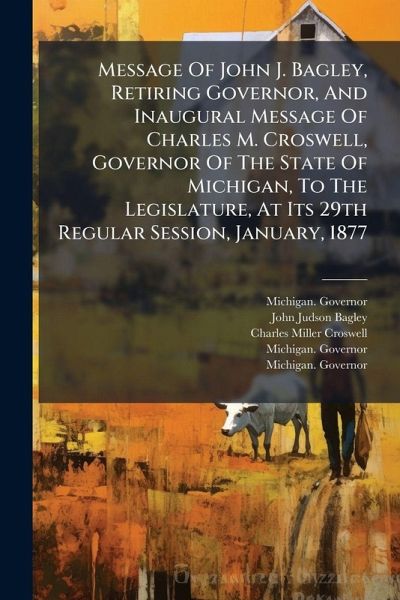
Message Of John J. Bagley, Retiring Governor, And Inaugural Message Of Charles M. Croswell, Governor Of The State Of Michigan, To The Legislature, At Its 29th Regular Session, January, 1877
Versandkostenfrei!
Versandfertig in über 4 Wochen
15,99 €
inkl. MwSt.
Weitere Ausgaben:

PAYBACK Punkte
8 °P sammeln!
This volume contains the retiring message of Governor John J. Bagley and the inaugural message of Governor Charles M. Croswell to the Michigan State Legislature at its 29th regular session in January 1877. Bagley's message reflects on his time in office and provides insights into the pressing issues facing Michigan at the time. Croswell's inaugural address outlines his vision and priorities for the state's future. These messages offer valuable primary source material for historians, political scientists, and anyone interested in the history of Michigan and American political discourse in the l...
This volume contains the retiring message of Governor John J. Bagley and the inaugural message of Governor Charles M. Croswell to the Michigan State Legislature at its 29th regular session in January 1877. Bagley's message reflects on his time in office and provides insights into the pressing issues facing Michigan at the time. Croswell's inaugural address outlines his vision and priorities for the state's future. These messages offer valuable primary source material for historians, political scientists, and anyone interested in the history of Michigan and American political discourse in the late 19th century. They provide a snapshot of the political, economic, and social concerns of the era, and offer a glimpse into the leadership and governance of Michigan during a period of significant change. This work has been selected by scholars as being culturally important, and is part of the knowledge base of civilization as we know it. This work was reproduced from the original artifact, and remains as true to the original work as possible. Therefore, you will see the original copyright references, library stamps (as most of these works have been housed in our most important libraries around the world), and other notations in the work. This work is in the public domain in the United States of America, and possibly other nations. Within the United States, you may freely copy and distribute this work, as no entity (individual or corporate) has a copyright on the body of the work. As a reproduction of a historical artifact, this work may contain missing or blurred pages, poor pictures, errant marks, etc. Scholars believe, and we concur, that this work is important enough to be preserved, reproduced, and made generally available to the public. We appreciate your support of the preservation process, and thank you for being an important part of keeping this knowledge alive and relevant.


